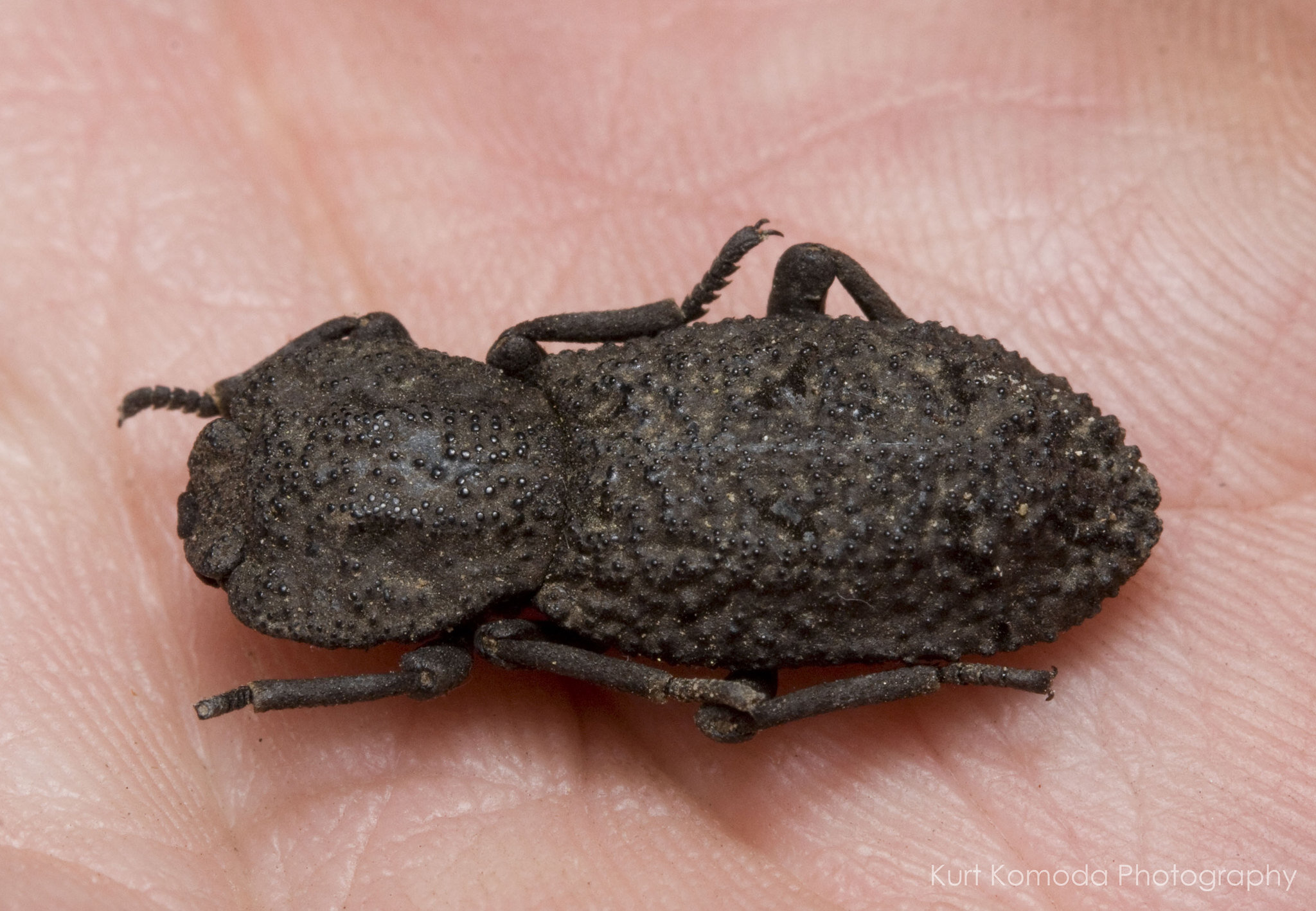PICTURED: The diabolical ironclad beetle in focus. Photo credit: Kurt Komoda Photography. CC 2.0
Sporting perhaps the best name of any animal in nature, the “diabolical ironclad beetle” is a true marvel of evolution. This seemingly benign, relatively small beetle lives in oak tree forests in the Western United States, but like other beetles, it doesn’t possess the ability of flight to help it get away from predators.
However what it does possess is an industructability that would put Tony Stark’s Iron Man suit to task. It can survive piercing barbs and crushing teeth, and can even make it home in time for dinner after being run over by a car.
The exoskeleton of the beetle can help it absorb and resist forces up to 149 newtons of force, about 39,000 times the weight of its body, due to a rigid, jigsaw pattern construction of the panels on its exoskeletal forewings. Without flight, these ‘elytra’ sealed shut over its evolutionary journey, providing a nearly-indestructible shell.
“They are the forewings, which in flying beetles cover the actual wings,” explains David Kisailus, a professor at University of California, Irvine. David and his team used advanced spectroscopy and microscopy to reveal the interlocking jigsaw-shaped interlocking joints which give the exoskeleton of the diabolical ironclad beetle its amazing toughness.
David and his colleagues were trying to see if the material structure of the beetle’s elytra could be mimicked in mechanical engineering to create tougher joints and fasteners, particularly for aircraft, and particularly on the turbines, which was what the team tested.
Photo credit: Kurt Komoda Photography. CC 2.0
The paper published in Nature Zoology found just that, and David took some time to speak to World at Large to clarify the exciting possibilities for science and engineering his work has revealed.
“[The] strength comes from the materials used as well as the geometry of the blades,” he explained.
”The structure’s ability to flex and absorb force is the toughness, which comes from the microstructural design within the blades”.
“I would imagine there are hundreds, if not thousands, of parts that can be fused together,” David told World at Large. “I read somewhere that aircraft fasteners – the type we compared our structure to, make up half of the 6,000,000 parts used to fabricate a Boeing 747-800 aircraft, but you can even think of something as simple as the joints on a carbon-frame bicycle,” he added.
The strange little animal was first discovered in 1851 by LeConte, and since there are so many insects on planet earth, naming them is generally a straightforward process.
“He was the entomologist who found these beetles. I have to imagine the ‘iron clad’ part of the name came from its robust exoskeleton, but not too sure about the “diabolical” part. Perhaps he was frustrated that he could not pin them so easily?”



